Fun fact: The Nissan Leaf is the best-selling car in Norway.
Thanks to aggressive EV policies in the Nordic country, there are now more than 50,000 of these electric-only hatchbacks kicking around their roads.
It’s also pretty popular across Europe and Japan, and subsequently is the best-selling electric vehicle in the world.
Of course, this should all seem foreign to us in Australia, where you’ll be lucky to spot the odd Tesla Model S – provided you’re in a metro centre.
The slow uptake of electric vehicles can hardly be blamed on Australia’s consumers. Our government has done virtually nothing to encourage people to jump on the electric car bandwagon, and the vast distances that are a stark reality of having an entire continent to ourselves means the concept of ‘range anxiety’ is amplified the moment you get on the freeway.
So, will the second-generation Nissan Leaf - set to arrive in Australia in August - help shift the landscape? Does the version set to arrive here help to relieve some of that range-tension? Is there enough charging infrastructure to put your fears to rest?
I took a pre-release version, specially imported from the UK, on a weekend inter-city range test between Sydney and Newcastle to find out.
Friday – What’s in the box?
I spent my first day with the Leaf becoming acquainted with its features, as I usually do with a vehicle on test. Able to be ordered right now, the Nissan Leaf is available in just one spec level with an MSRP of $49,990.
We can’t tell you the full specification of the cars that will actually land here yet, but Nissan was able to confirm the Leaf will have a 30kWh battery – good for a 270km range (WLTP) – and it will be the first Nissan in Australia to offer Apple CarPlay and Android Auto support, hosted on its 7.0-inch multimedia touchscreen.
Other surprisingly luxurious features on our sample car included partial leather trim on the wheel, door cards and seats, single-zone climate control, 17-inch alloy wheels, a partially-digital dash, full LED front lighting, heated front seats and steering wheel and built-in nav.
There was also an impressive active safety suite.
While a similarly-equipped petrol hatch would hardly be 'good value' at the price, a similar spec level on local cars would land our Leaf in direct competition with the Hyundai Ioniq Premium Electric ($48,990 – 230km range) and Renault Zoe Life ($47,490 – 300km range).
After a drive home (from 100 per cent charge, with the dash showing 261km range) and a few laps around the area (about a 20km commute) to play with the features, the battery sat at 91 per cent with a reported range of 229km.
Saturday – A range anxiety odyssey
My weekend plans were to take the Leaf to Newcastle’s city centre, some 152km north of my home in Sydney’s Lane Cove.

No problem, right? The remaining 230km range should overshoot that easily and, according to my research, the NRMA had installed a 50kW fast-charging station in Wallsend, a western suburb of Newcastle. As it turned out though, we hit a few snags along the way.
Firstly, we ran an errand in Ashfield, located 15km in the wrong direction – which ultimately added 29km to our trip, and secondly a little-known fact about EVs is that, unlike their petrol counterparts, they tend to get less efficient on the freeway.
My concern mounted slightly when, on entry to the M1 (with 136km to go), I noted the battery had dropped to 71 per cent with a reported range of 181 kilometres. Deep breaths. I told myself. It'll be fine…
And, for the first three-quarters of the trip, it was 'fine'. The battery was depleting at a disturbingly visible rate when compared to petrol cars, sure, but the numbers seemed to add up for a decent overshoot.
Only, over time on the open road, the average efficiency dropped, and by the time I was driving past a place called Killingworth with just over 40km of range remaining, I asked my equally nervous partner in the passenger seat to run some numbers.
By the time we arrived at the Wallsend NRMA fast charger we would have roughly 30km of range left. Our appointment was located in the heart of Newcastle city, 12km to the east, for a 24-kilometre round trip back to the charger, provided we didn’t take any wrong turns along the way.
I just wasn’t comfortable with a six kilometre margin of error, so we used what little spare time we had to pull into the fast charger to see how much juice we could get with the spare time we had left.
At this point it’s worth noting how much impact the freeway had on our EV efficiency. You’ll note we started with 181km range at the beginning of the M1, but by the time we peeled off near Wallsend 126km later the final figure the dash showed before plugging in was 36km.
We had seemingly gained an extra six km range just from hopping off the freeway, thus adding regenerative braking back into the equation.
.jpg)
So, almost 20km of range had simply been lost along the way due to freeway inefficiencies. Enough to have made our appointment and return to the charger with a more comfortable margin.
Regardless, we used our 10-minute leeway to plug the car in and suss out a coffee spot for the (roughly 45min) charge that would be required for our return journey the next day.
The NRMA charger has a 50kW max output and was available with two output cables, a 'Type 2 Mennekes' charger, and a 'Combo 2' charger. I hadn’t considered charger compatibility before I’d left but was relieved to find our Leaf accepted the Type 2 charger with no issues.
.jpg)
While the coffee situation looked dire, the charge situation was much better. Our car had gone from just 13 per cent and 36km remaining to a more reasonable 23 per cent or 60km range in just a few minutes. More than enough to make our rendezvous.
Later that afternoon, we returned to the charger with the intention to re-charge the battery as close to 100 per cent as possible before checking in to our accommodation for the night.
The NRMA fast charger allows you to choose either an 80 per cent or ‘MAX’ charge level. It’s worth noting that once you get above 80 per cent charge the rate slows to a trickle. As such our car reached 94 per cent in 50 minutes.
.jpg)
We then made the 11km commute to our accommodation in Newcastle.
Sunday – That’s not the right kind of plug…
With 89 per cent charge and 229km range reported on the dash, our return journey was largely uneventful, thanks to the fact that we had no detours to take from our 152km route.

Again, it became apparent how much freeway travel, and toward the end of our journey, climbing hills like the one south of the Mooney Mooney bridge, absolutely kills this car’s energy consumption.
The 33-degree, almost summer-like weather also yielded another surprise, as the climate control made a not-insignificant impact on range.
In the 25-degree weather of the preceding day, the Nissan’s computer said that turning off climate control would yield only a single extra kilometre in range, but on our return journey, we could save a whole 13km by switching it off and subsequently turning the cabin into an oven.
Thankfully we were headed for a much healthier range overshoot, so we could sit in comfort.
How does the Leaf drive?
Nicely, actually. One of the obvious virtues of an electric drivetrain is the lack of noise, but even road noise was good for a car this size. While some electric cars are famous for their brutal acceleration, the Leaf feels a little on the lethargic side.
When you plant the accelerator the electric motor screams to life, but you can really feel the weight underpinning the Leaf.
Obviously this pays dividends in the corners, where the Leaf is solidly planted. It's doesn't have (nor does it need) a sporty suspension tune.
Instead it is spongy and comfortable, filtering out the worst bumps with ease. This is a UK-spec car though, so that could change by the time the Leaf formally arrives Down-Under.
On arrival in Sydney, we ended up with 18 per cent battery remaining and 50km range.
.jpg)
As we were scheduled to visit family in Epping that evening (a 30km round-trip) I decided to investigate any nearby fast chargers.
Imagine my surprise when I found one in a public car park down the street. Topping up should be easy then. Or so I thought...
As it turned out, I not only found six charge points, but also a first-generation Nissan Leaf already plugged in. The cables were locked to the stations, but the screen helpfully told me I needed the ChargePoint app to activate them. No problem, I downloaded the app and activated the station.
.jpg)
The trouble was, the plug didn’t match the port on my Leaf (the same ports that will arrive on locally-delivered cars).
Surely, this was an error. I searched the car up and down for another port or adapter, but alas, there was none. I should have done my research. Remember that Type 2 connector I used at the NRMA port? It turns out that’s one of a plethora of chargers available in Australia.
.jpg)
At this particular station, I had found something called a 'J1772' connector, which incidentally, the first-generation Leaf had a port for.
I discovered later that Google Maps will actually tell you the type of connector available at most points, but my second-gen Leaf only had a Type 2 connector or something called a 'CHAdeMO' two-prong connector which is a Japanese standard. Only ChargeFox points host these in Sydney.
As I couldn’t connect the J1772 connector to my car, I plugged the Leaf into a nearby wall socket and we swapped into my partner’s petrol-powered Hyundai i30 for the night. I admit, I hadn’t expected to have to rely on petrol on my test.
.jpg)
Monday – How the Leaf was meant to be driven
It’s worth mentioning the Monday because it enlightened me to the Leaf’s best environment – driving to and from work. You see, while I couldn’t charge the Leaf in my one apartment parking spot (as the i30 was parked there), I could charge it at the CarsGuide office.
From nine hours straight of being plugged in to a regular wall socket in the CarsGuide garage, the Leaf gained 144km of range. So, a solid net gain on my 26km daily commute. Even if I never plugged it in at home, I could maintain 100 per cent charge every day.
Ideal for those simply needing to travel 40km or less to and from work every day – and let’s be honest – that’s the worst most Australians in capital cities will subject their cars to most of the time. It's comfortable, has a very usable 405-litre (VDA) boot, and is quiet and smooth to drive.
Nissan Leaf 2019:
| Engine Type | Not Applicable, 0.0L |
|---|---|
| Fuel Type | Electric |
| Fuel Efficiency | 0.0L/100km (combined) |
| Seating | 5 |
| Price From | $20,460 - $25,960 |
| Safety Rating |
|
Verdict
The folks at Nissan are right when they say the Leaf is suited to city dwellers. It’s a slick and refined little hatch that’ll save you cash as you commute between work and home, even if you’re just plugging it into the wall.
It’s only when it comes to intercity drives where the range anxiety becomes intensely apparent, the Leaf’s range is simply too limited, the charge network is spread too thin, and that will ultimately rule it out for many Australians for the time being.
A few take aways from our range test:
- The real-world range estimates are for combined usage, and prolonged freeway usage will yield varied results.
- If I had allowed for a 100 per cent charge the night before, I would have made this trip without ‘topping up’ in Wallsend on the way through.
- Always make sure there is a compatible charger at the end of your journey. Know which charge systems your car is compatible with, so you’re not stuck out on a limb with limited options (like a wall-socket) for charging
- Also, when considering chargers, keep in mind their max kW output. We were lucky that the NRMA offered one of the highest output chargers in Australia at 50kW – Most chargers in Australia’s network are less than half that.
- 260km of range is enough for intercity commuting, but only just. If you’re dead-set on buying an EV and regularly make these journeys, you’ll have to spend significantly more on either a Hyundai Kona or Tesla Model S for a significant range boost (460km+).
- It would be easy to live with this car if it only commuted to and from work, even if you were just recharging at a wall-socket at either end. You can get almost 150km range from a nine-hour charge. I assume this is how Nissan expects most Leafs to be used.
- It’s a shame the government isn't encouraging the take-up of these vehicles for daily commuters with tax breaks, exemptions from tolls, or free use of council parking, as in Europe.
Will you be considering the second-generation Nissan Leaf when it arrives in Australia? Tell us what you think in the comments below.
Pricing Guides

Range and Specs
| Vehicle | Specs | Price* |
|---|---|---|
| Base | Electric, 1 SPEED AUTOMATIC | $20,460 - $25,960 |






.jpg)

.jpg)
.jpg)
.jpg)
.jpg)
.jpg)
.jpg)
.jpg)
.jpg)
.jpg)
.jpg)
.jpg)
.jpg)
.jpg)
.jpg)
.jpg)
.jpg)
.jpg)


















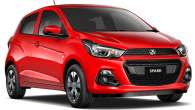
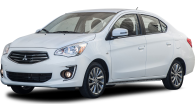






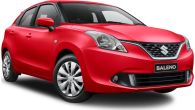





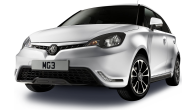

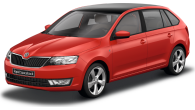
.jpg)




.jpg)
.jpg)